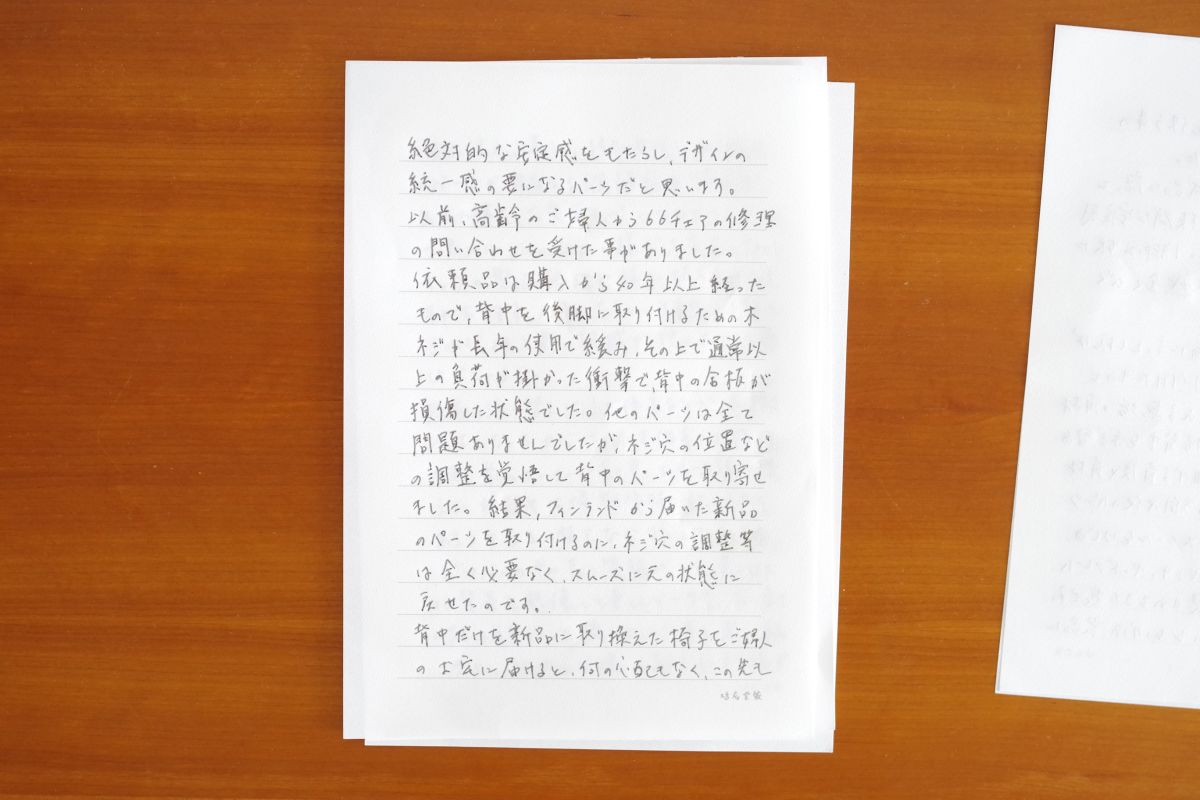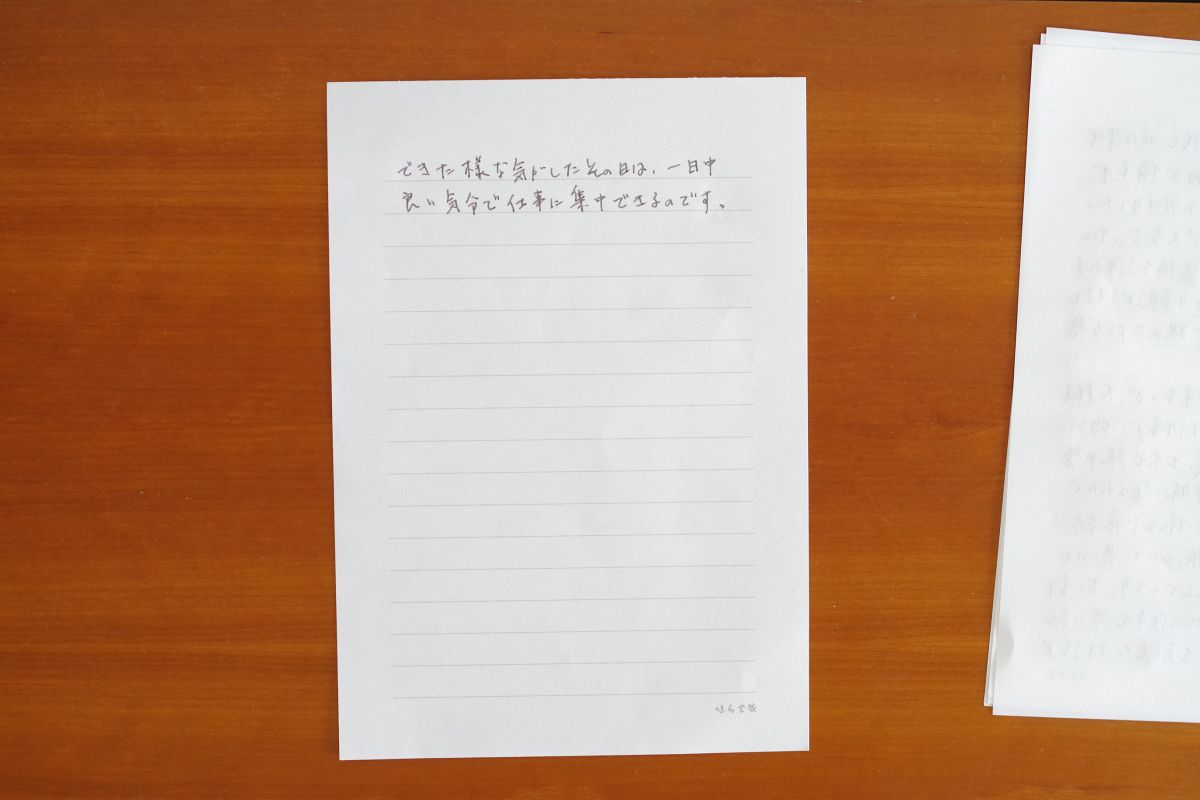
Nobuyuki Hamada: "I can feel the former owner's excitement."
A letter about a stool and a chair


Easy to maintain, repair, and repurpose, Artek’s designs are made to last. Many of our friends and collaborators have lived with an Artek piece for years. We asked them to share a story about their favourite one and why it brings them joy.
In response, Nobuyuki Hamada sent us a letter.
Exactly 20 years ago, a set of two round stools came into my home. At the time, I knew very little about them – only that they were called Stool E60, made of birch, and designed in Finland in the 1930s. I was looking for a chair that would fit to my new apartment, and the E60’s simple form, high versatility, and stackable functionality seemed ideal. I thought it would be a great choice as a dining chair for a person who lives alone. Over the trajectory of my life, I would encounter the stool in many other places, but back then, I’d never touched or sat on it before.
I remember lifting the stools when they first arrived in my apartment, feeling the physical weight of them in my hands. They came ready-to-assemble; I attached the legs one by one, screwing them carefully into the seats. The work required concentration. It was as though the stools were asking me whether or not I was truly prepared to own them. When I was done with the assembly, I sat down. The stools felt much more stable than they looked – something I still appreciate today. I gave one to my daughter; the other I still use daily. It’s as sturdy as ever.
When I began to research the stool, I learned that its stability is thanks to the L-leg, a piece of solid wood timber bent into an L shape. And I discovered how versatile the L-leg system is; by adjusting the angle, width, and length of timber, the leg can be used for dining chairs, tables, benches, and even bedframes. My stool is as stable as it is thanks to the L-leg, the foundation of its strong, unified design.
A while ago, I received an inquiry from an old lady. She wanted to know whether we could fix her Chair 66 in the atelier. The chair had been purchased more than 40 years earlier. A wood screw had come loose – one that attached the backrest to a back leg – and the chair had become wobbly. Cracks had begun to form, since it no longer bore weight at the right angle. Everything else was in good condition. I ordered the appropriate parts from Finland, assuming I’d have to adjust the screw hole once they arrived. As it turned out, the new parts fit the old chair perfectly; there was nothing to adjust. A smooth procedure from start to finish. The old lady was thrilled when I returned the chair to her, complete with new backrest. She was happy to be able to use it without worrying about the screw, and she loved the uniqueness of a chair made in the 1970s with a new backrest from the 2010s.
Old Artek furniture is often brought to my atelier for restoration – for example the warleg*. With my Stool E60 as the point of comparison, I often feel as though I’m greeting a relative three generations back. Reupholstering is usually the main task. I start by removing the old material; this is the moment I look forward to and enjoy most. I can feel the former owner’s excitement, the way their imagination and senses engage as they carefully choose a fabric. I can’t help but wonder what path the furniture took to get to me, and I am thrilled to uncover secrets hidden within its upholstery. Sometimes, I find handwritten notes, instructions from the factory. One time, I even discovered the original upholstery, nailed to the wood. At moments like these, when I encounter skilled craftsmanship, I feel as though I’m in conversation with my mentors across borders and beyond time. With these good vibes, I can concentrate even better on the work in front of me.
*A type of leg manufactured during the war because materials were scarce and its finger-joint construction required less glue than the L-leg’s.







